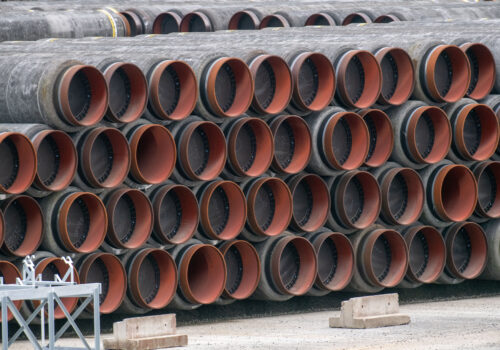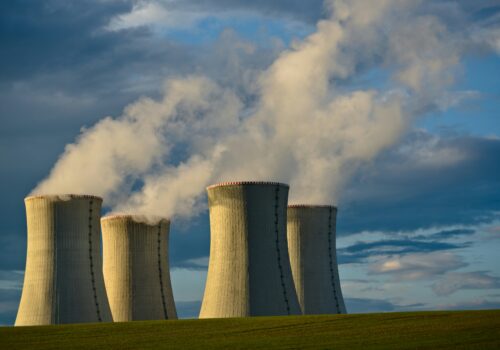Join Chris Cuomo, Bill O’Reilly and more big-name guests Wednesday for NewsNation’s CUOMO Town Hall with a live studio audience and virtual audience across America to discuss the first 100 days of President Donald Trump’s administration. Find out how to watch!
(NewsNation) — President Donald Trump has signed a record number of executive orders during his first 100 days in the White House, a tally that is more than half of the 220 orders he signed during the entirety of his first term.
The 141 executive orders signed by the president as of this week range from immigration to ending Diversity, Equity and Inclusion programs to creating new government programs, including the Department of Government Efficiency, which thrust tech billionaire Elon Musk into a new political spotlight.
On Monday, the eve of his 100th day in office, Trump signed a pair of immigration-related executive orders. One directed the Justice Department and the Department of Homeland Security to identify jurisdictions that Trump considers to be “sanctuary cities” refusing to cooperate with federal immigration enforcement.
The order directed Attorney General Pam Bondi and DHS Secretary Kristi Noem to publish a list of sanctuary cities as the Trump administration considers legal action against those jurisdictions, White House press secretary Karoline Leavitt said.
“It’s quite simple,” Leavitt told reporters Monday. “Obey the law, respect the law, and don’t obstruct federal immigration officials and law-enforcement officials when they are simply trying to remove public safety threats from our nation’s communities.”
The second executive order is designed to “unleash America’s law enforcement to pursue criminals and protect innocent citizens.” The order authorized Bondi to create a mechanism that provides legal resources to police officers who unjustly incurred costs or liabilities for actions taken while doing their jobs. The order also provides excess military and national security equipment to state and local law enforcement agencies.
Here’s a look at other major executive orders Trump has signed during the first 100 days of his administration. The Associated Press reports that as of this week, dozens of lawsuits have been filed challenging executive orders and other actions taken by the Trump administration and DOGE.
Security of the US-Mexico border
Trump declares a national emergency at the southern border
This order helps the secretary of Defense quickly and seamlessly deploy members of the armed forces to the border and free up more federal resources.
Trump designated cartels as global terrorists
Under this order, certain international cartels and other criminal organizations will be designated as foreign terrorist organizations or global terrorists.

Trump changes the definition of birthright citizenship
Trump’s executive order changed the definition of birthright citizenship and declared that no government department or agency will issue citizenship documents to children whose parents do not meet specific guidelines regarding their own citizenship.
The economy
‘America first’ foreign policy
Trump signed an executive order calling for the secretary of state to issue guidance bringing the department’s policies, programs and personnel in line with a policy that puts “America first.”
Trump enacts 25% steel and aluminum tariffs
In February, Trump signed an executive order memorializing his plan to impose 25% tariffs on all steel and aluminum imports, including from Canada and Mexico.
“This is the beginning of making America rich again,” Trump told reporters as he signed the document.
Trump regulates imports with reciprocal tariffs
In early April, Trump signed a series of reciprocal tariffs and threatened to unleash a global trade war on a day a day he deemed “Liberation Day.”
Trump announced a 25% tariff on all foreign-made cars starting at midnight. He also said the U.S. would be instituting reciprocal tariffs, including 34% on imports from China (on top of the previous 20%, making it a 54% tariff), 20% on imports from the European Union, 46% on imports from Vietnam, 32% on imports from Taiwan, 24% on imports from Japan, 49% on imports from Cambodia, 10% on imports from the United Kingdom and 30% on imports from South Africa, among others.

Roughly 60 countries are being singled out for the reciprocal tariffs, the majority of which are set at half of the tariff those countries place on U.S. goods. There will be a 10% baseline tariff on all countries where reciprocal tariffs are not specified.
On April 9, Trump announced a 90-day pause on reciprocal tariffs, but raised the rate on China’s tariff to 125%.
Diversity and inclusion
Trump signed an executive order ending funding for DEI programs in the government and directed the Office of Management and Budget and the Office of Personnel Management to end “illegal mandates and preferences.”
Trump limits definitions of gender identity
The order directs federal agencies to use sex, not gender, in federal policies and documents. The order will also limit the choice of gender identification to sexes assigned at birth.
Keeping men out of women’s sports
Trump’s executive order bans transgendered athletes from competing in girls’ and women’s sports and gives federal agencies wide latitude to ensure that agencies that receive funding abide by Title IX in alignment with the Trump administration that interprets “sex” as the gender a person was assigned at birth.
Education
Trump’s executive order ordered the ending of educational “indoctrination” that included “radical, anti-American ideologies.” The order also called for federal funding to be eliminated for schools that did not end “indoctrination,” including based on gender identity and discriminatory equity ideology.
Trump’s executive order authorized the closure of the Department of Education.
Military
Trump’s executive order reinstates military service members who were dismissed for refusing to get the COVID-19 vaccine and issues them full back pay and benefits and reinstates military members to their former rank.

The president signed an executive order that bans transgendered service members and that orders that all Department of Defense medical standards be updated to “ensure they prioritize readiness and lethality”. The order also ends the use of “invented and identity-based pronouns” within the Department of Defense.
Trump’s executive order eliminates the military’s Diversity, Equity and Inclusion programs, which comes after the president previously ordered all DEI programs across the government to be done away with. The order eliminates race and sex-based discrimination within the armed forces and bans sex-based preferences within the military, the Department of Defense or the Department of Homeland Security.
Department of Government Efficiency
Trump’s executive order establishes the Department of Government Efficiency, tol be overseen by tech billionaire Elon Musk.
Trump’s executive order implemented the DOGE workforce optimization initiative, which the president signed “to restore accountability to the American public” and commences a “critical transformation of the federal bureaucracy.”
Health
Trump’s executive order expands access to In vitro fertilization and more affordable treatment options. Doing so, the order states, provides more support, awareness and access to affordable fertility treatments that can help families “navigate the path to parenthood with hope and confidence.”
Trump’s executive order withdraws the United States from the World Health Organization, which the order stated “continues to demand unfairly onerous payments from the United States, which are far out of proportion with other countries’ assessed payments.”
The Associated Press contributed reporting to this story













